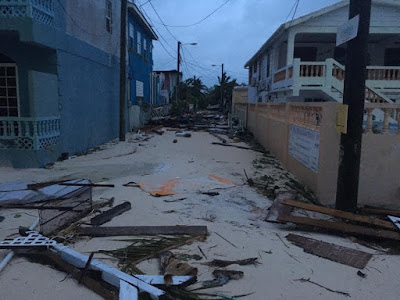A recent Huffington Post report says the Red Cross has only managed to build six houses in Haiti since the earthquake in January 2010 and they have spent a half a BILLION dollars in donations doing so.
http://www.huffingtonpost.com/2015/06/04/red-cross-haiti-report_n_7511080.html (why the hyperlink isn't working I don't know)
If the story is to be believed, and it should not be entirely trusted, this reads like gross mismanagement of a half a billion dollars but there is more to it than this I suspect.
If we start at the bottom and work our way up, security of tenure is the absolute foundation. No NGO is going to build houses on land that offers no security of tenure and it becomes especially problematic in places with a lot of poor people. We can give them, tin, we can give them lumber and let people build their own, or we can solve the tenure issue and improve lives.
This is not as easy as it sounds. Belize has a tenure system based on the Westminster model, that, like all things hundreds of years old, moves slowly. Too slow for the single Mom and her six kids who have no house.
The solution needs to be two pronged: Short term and immediate aid, which has already started and longer term security of tenure.
The economy of Belize is in crisis but even this needs to be kept in perspective: In a comparison between sovereign Canada and sovereign Belize two numbers stand out, and in the case of Belize, potentially offer hope. I use the word sovereign, because the debt numbers I am using do NOT include, Canadian provincial or municipal debt. In Belize they do not have provinces, but do operate a district system with limited ability to borrow. To keep it level:
The economy of Belize is in crisis but even this needs to be kept in perspective: In a comparison between sovereign Canada and sovereign Belize two numbers stand out, and in the case of Belize, potentially offer hope. I use the word sovereign, because the debt numbers I am using do NOT include, Canadian provincial or municipal debt. In Belize they do not have provinces, but do operate a district system with limited ability to borrow. To keep it level:
Belize
2015:
Population: 351,700
Total debt: $1.2 Billion
Percentage of GDP: 75
Per capital debt: $3,639.00
Per capital debt: $3,639.00
Unemployment rate 10.1%
Per capital income $8,500 bze (pegged 2-1 to the US dollar)
Per capital income $8,500 bze (pegged 2-1 to the US dollar)
Canada
2015:
Population: 36,000,000
Total debt: $1.42 trillion
Percentage of GDP: 91.5
Per capita debt: $39,634.00Unemployment rate 6.8%
Per capita income $48,250 cdn (floating to the US dollar)
On the Surface it looks like Belize should be helping Canada out. The challenge in a sovereign economy of only 120,000 workers, is the amazingly low absolute upper limit on total dollars. This is true, whether we talk of government taxation or personal debt. In Canada, there is much more capacity and willingness to pay taxes and take on personal debt. The average Belizean worker has no such capacity. The tiny place looks better on paper than Canada, but this is absolutely not true and when we deal with expectations this has to be front and center in the minds of those contributing to the recovery.
A sheet of plywood is $20.00 in Canada and takes the average worker an hour of his labour to pay for it. The plywood is also $20.00 in Belize and it will take the average worker NINE hours to earn enough to pay for it.
That is the problem.
There are no good ways for people to replace their losses in Belize, no insurances, for the most part and a very limited capacity to respond by the government. They are responding, and advising people to make good use of the materials they have at hand.
Hence the need for NGO's and foreign assistance.
The other issue, and a particularly troubling one from a housing perspective is the lack of skilled workers, this makes coordination very difficult indeed.
Do we rebuild the houses where they were and worry about tenure later, or do we build in new places where we can offer tenure and raze the old? My preference is the latter, for those who's homes are beyond redemption, but for those who's homes can be repaired, they should be repaired and while we are at it, we should teach some skills. I'm a carpenter by trade and I have a love affair with the techniques used in Belize. Imagine 1955, you needed a house or a garage you built one. It might not be square or level, but it's "good enough" and Belize is largely built around the "good enough" motto.
The approach should be:
Inspect it all and repair what can be repaired, local labour and material where at all possible. Do not fall prey to the notion that the home needs to be brought up to the current building code, just fix it so it's liveable, get people indoors don't worry about tenure.
Build new as can be funded, be it Habitat for Humanity, Rotary or the Red Cross as funder. New builds will require tenure, once the new is built, assign the housing to those in need. Make they pay something for it, be it time building or a stipend rent. A simple Mennonite style house, perhaps 20' x 24' could be built for $10-15,000.00 usd. This isn't a granite countertop McMansion I'm talking here, it's safe, dry shelter.
We could do a lot of good if we had about a hundred million dollars for this, the employment as well as the improved conditions will require serious commitment and coordination. It's all doable and will produce results, unlike the American Red Cross and Haiti which has managed to build less than six houses in seven years.
























